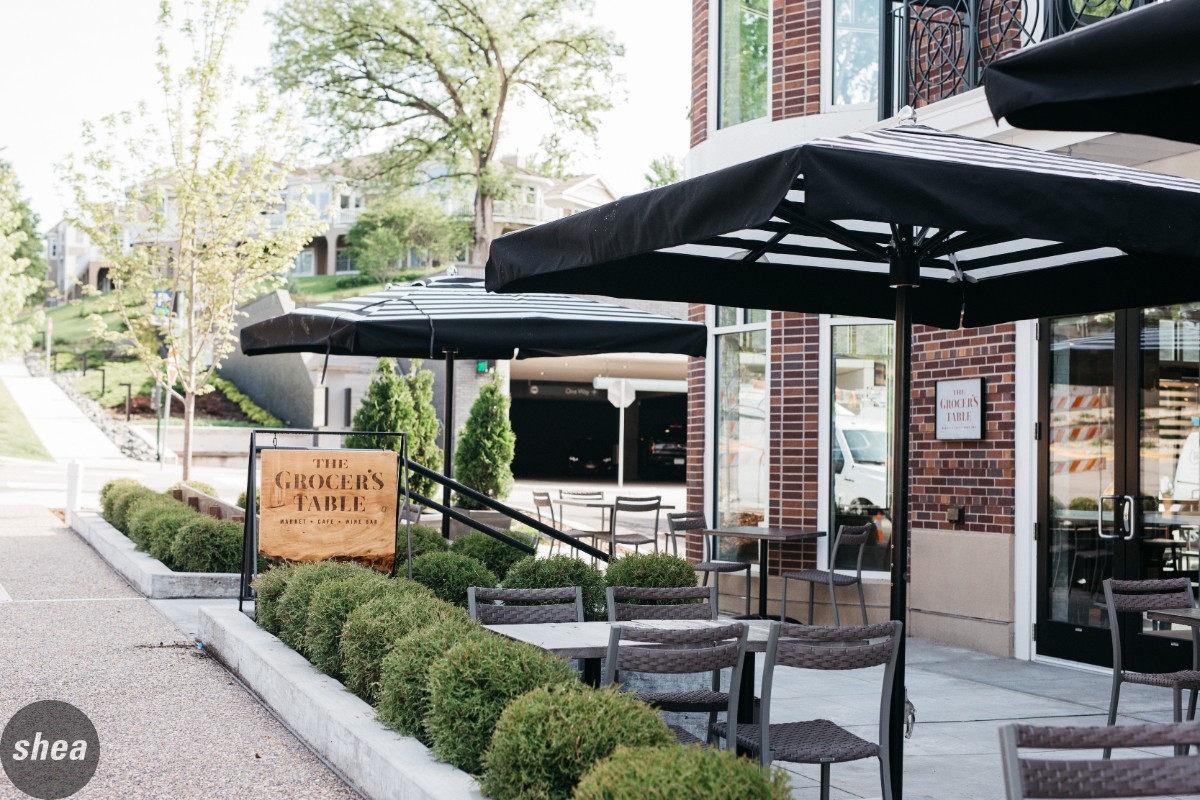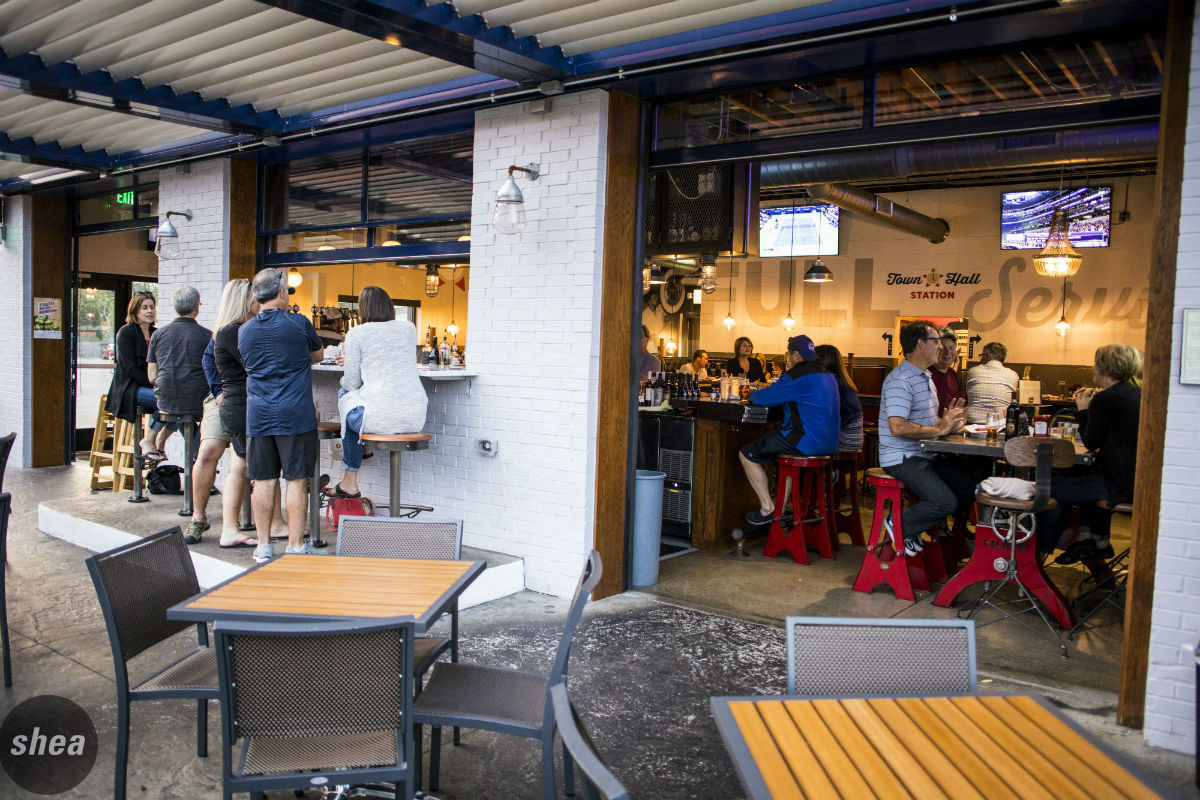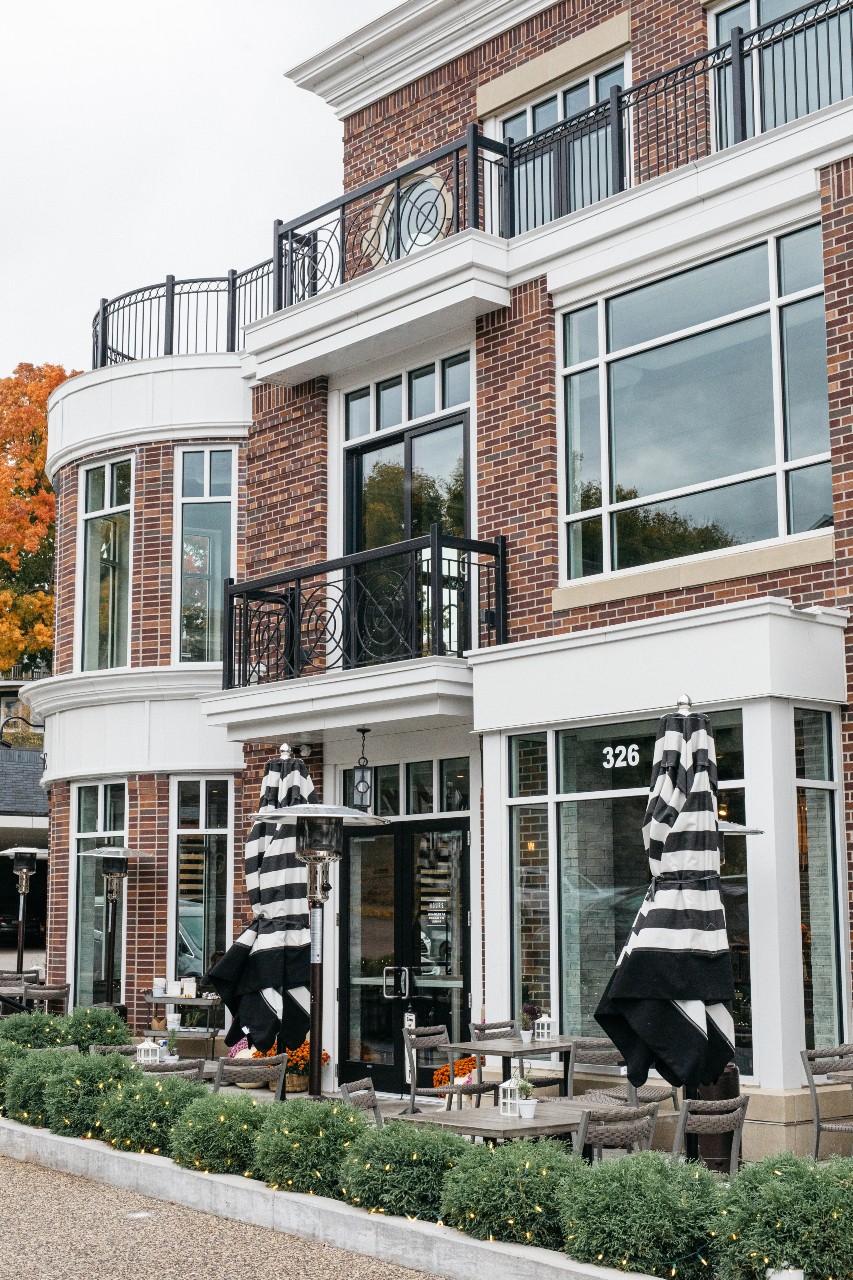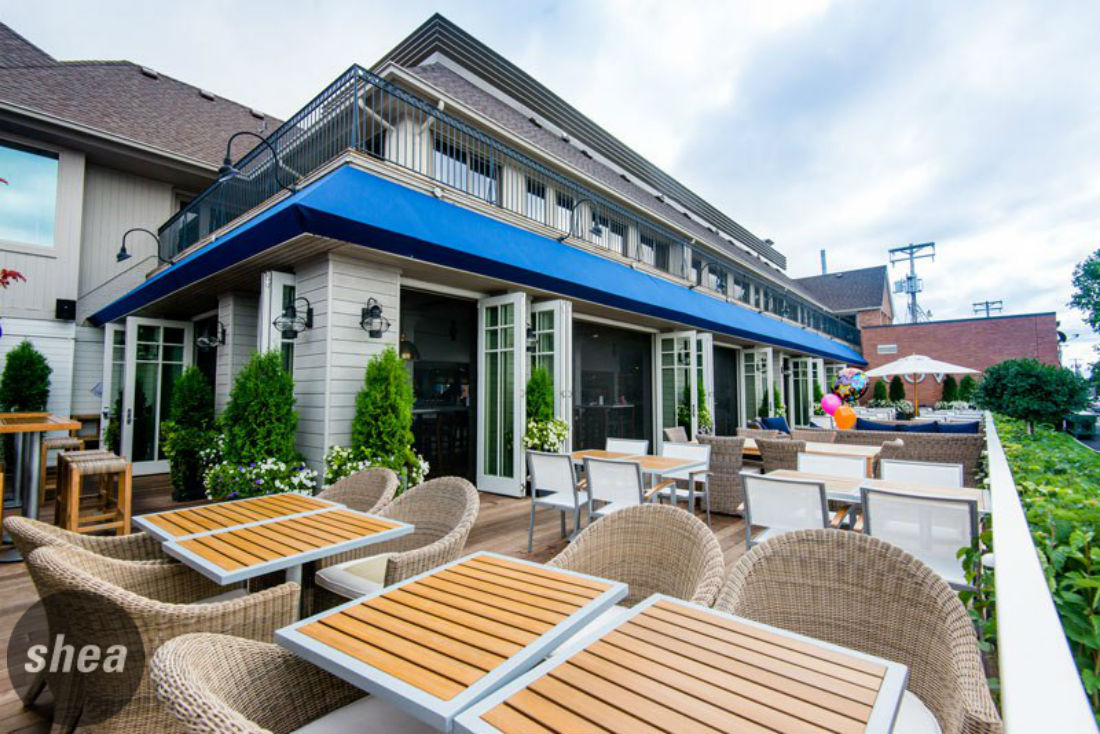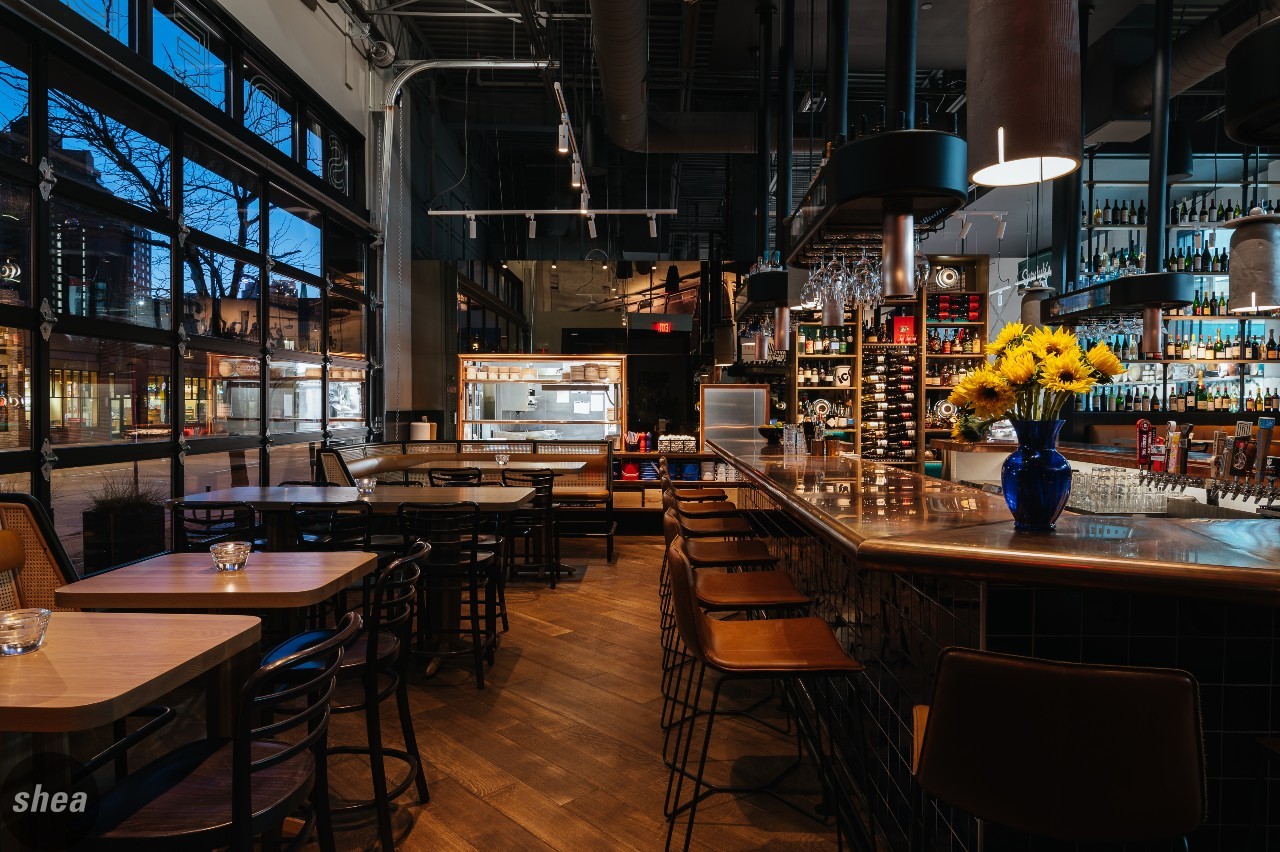We’ve already given the rundown on how we’re leading design thoughts for 2022 and beyond. Let’s dive into how a new level of importance has been placed on an area that’s always been significant: outdoor space design and experience.
 Outdoor Dining, Then and Now
Outdoor Dining, Then and Now
Outdoor space has always been a key feature for restaurants. It’s both the literal and metaphoric front door of a restaurant, a first impression that tells guests what kind of vibes to expect inside, as well as an additional warm-weather draw and revenue driver for restaurants. But the last year has taught everyone that creating an outdoor dining area that really feels like an extension of the indoor experience is more than worth the investment.
Early iterations of this notion in practice were about survival. Restaurants did whatever they could in 2020 to add more outdoor space, but it’s time to focus on what’s sustainable for the long-term, as well as how to transition it through at least three seasons.
The time for shacks and shanties is over, and design firms like Shea know just how to help operators come up with a branded dining experience that’s a valid permanent solution. This is really a place to invest and plan to spend design dollars—patios, parklets, decks, and rooftops aren’t just about adding additional seats, they’re an extension of the restaurant and a way to further a restaurant’s reach beyond its four walls.
 Where People Want to Be
Where People Want to Be
Outdoor dining spaces need to be just as interesting, vibrant, and have as much design dimension as the indoors. By creating a dining space where guests want to be year-round, operators can maximize the value of their investment in the space. This means picking solid, comfortable chairs and tables, maintaining the space perfectly, and creating an oasis by way of greenery and plants. A sense of space is also important for patios—they deserve the same kinds of dining zones as the interior, with outdoor rugs, astroturf, barriers, and other space-defining ways to build different areas.
Building that on-brand experience is also achievable by replicating elements and materials that have been used inside the restaurant. At COV in Wayzata, Shea brought the same color scheme and East Coast lakeside vibes to the expansive patio space. Loungey outdoor club chairs and sectionals and expansive umbrellas for shade are perfectly in keeping with the light, bright indoor dining room just through the wide-open deck doors. Similarly, The Grocer’s Table brings its modern-rustic-chic vibe outside by way of heaters, fire pits, plenty of biophilia, and Shea-designed elements that have made it a year-round option.
Similar notions can be seen around the country, such as at Manhattan’s Pastis, where a Parisian bistro feel blends right into a sidewalk café bolstered by propane heaters. Leon’s Oyster Shop, a Charleston staple, includes a backyard, partially-enclosed Oyster Shed echoing the shop’s laid-back vibes and taking advantage of South Carolina’s milder weather. We brought the deft Shea touch to Palette in San Francisco, creating an outdoor redwood-planked terrace that includes landscaping, heat lamps, and shimmering lights. And Brooklyn’s Le Crocodile really brings the indoor experience into their alleyway with a tiled floor, considered lighting, and exposed brick that make it feel more like a secret room than an afterthought.
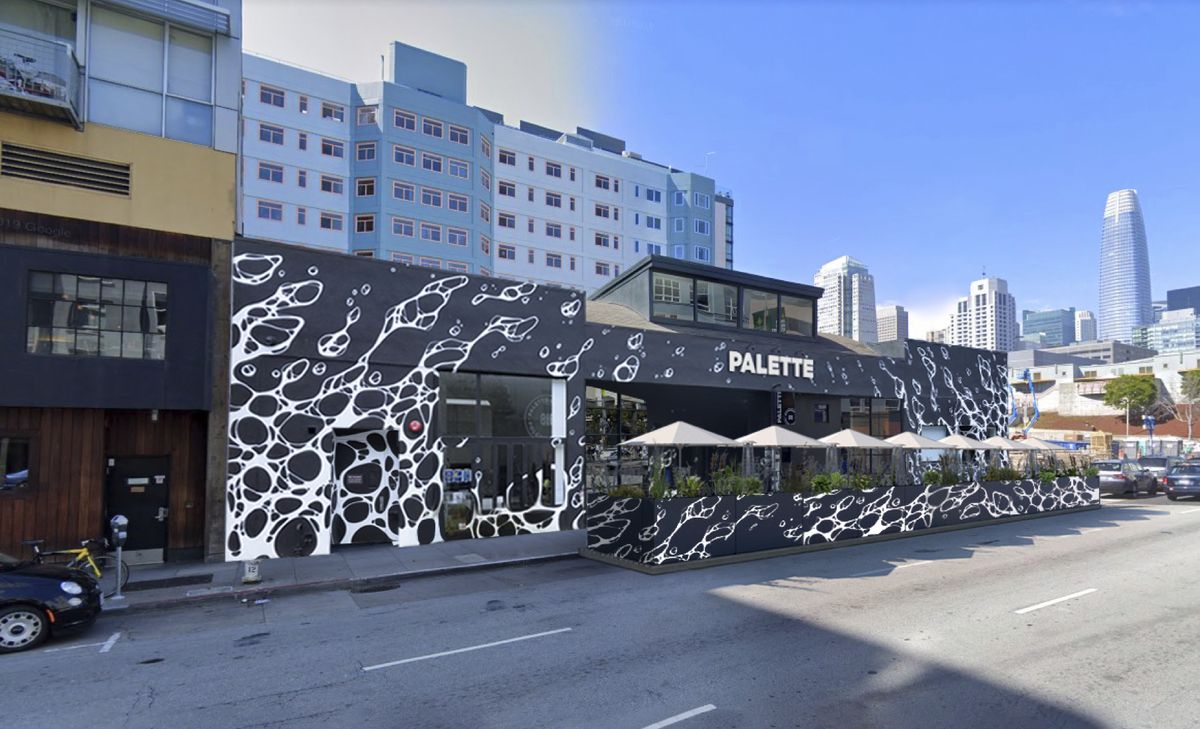
Following up on that love note to restaurateurs: Plan to spend some money creating an outdoor space and giving it some love, too—bringing in professionals who are leaders in thought and research is an investment that’s worth it. Dividends will pay off both now and once the pandemic is long in the past.

